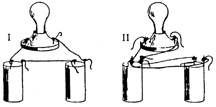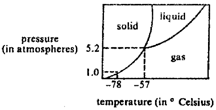http://www.asee.org/precollege/.
Quiz #1: Do you Fit the Profile?
Quiz #2: Test your Aptitude (don't worry if
you do not know the answers).
"The seeds of great discovery are constantly floating around
us, but they only take root in minds well prepared to receive them."
-- Joseph Henry
Quiz #1: Do You Fit the Profile?
Would an engineering career fit your interests and lifestyle? Answer these questions and find out.
- Do you get good grades in math and science?
- Do you enjoy knowing how things work?
- Do you ever think of new or better ways to do things?
- If you get a gift that says "Assembly Required", do you put it together yourself?
- Do you like to work with computers and play video games?
- Do you like to do mazes and jigsaw puzzles?
- Do you usually make sound decisions, and do people trust your judgment?
- Can you express yourself easily and clearly?
- Do you work well with others?
- Do you like to know "why"?
Answers:
If
you answered "Yes" to most of the questions, your potential
for success in engineering is high. Let's examine each of the 10 questions
to see how a "yes" answer helps identify you as a potential
engineer.
- Math and science are basic tools in engineering.
- Wanting
to know "how it works" is essential to finding better ways
to design things.
- The desire to figure things out and "do it better" is an important drive in engineers.
- See #3.
- Computers and video games provide an introduction to working with graphics as well as to problem-solving.
- Analytical problem solving, the skill you use when working on mazes and puzzles, is among the most important aspects of engineering work.
- As an engineer, your ability to focus on the problem at hand and make knowledgeable comments and decisions will help you gain respect and will make you a valuable member of the engineering team.
- Engineers must be able to explain ideas and decisions to all audiences.
- Engineers work with technologists and technicians as a team. They must be able to work with people who have different backgrounds and special interests.
- Wanting to know how things work is something that drives all engineers. This curiosity encourages engineers to break complex problems into more simple ones that will be easier to handle.
The National Engineering Aptitude Search (NEAS) helps you assess your ability to study engineering. Here's a sampling:
Mathematical Understanding:
1. If (x + a)(x + b) = x2 + 5x + 6 for all x, then what is the value of ab?
(a) 2
(b) 3
(c) 5
(d) 6
(e) 30
 2. Three identical cubes with edges 2 inches long
are placed one on top of the other. What is the volume, in cubic inches,
of the resulting rectangular solid?
2. Three identical cubes with edges 2 inches long
are placed one on top of the other. What is the volume, in cubic inches,
of the resulting rectangular solid?
(a) 48
(b) 24
(c) 18
(d) 12
(e) none of the above
3. A 45-inch piece of ribbon was cut into 3 pieces. The second piece was 3 times as long as the first, and the third piece was 2 times as long as the second. How long, in inches, was the third piece?
(a) 30
(b) 27
(c) 18
(d) 15
(e) 9
 Practical Understanding:
Practical Understanding:
4. Which rear wheel will turn faster when the tricycle is steered in the direction indicated by the arrow?
(a) I
(b) II
(c) No difference
 5. In which circuit will the bulb burn brighter?
5. In which circuit will the bulb burn brighter?
(a) I
(b) II
(c) No difference
 6. What does the phase diagram of carbon dioxide
shown here reveal about carbon dioxide?
6. What does the phase diagram of carbon dioxide
shown here reveal about carbon dioxide?
(a) Tremendous pressure is needed to
liquefy carbon dioxide at -78° C.
(b) Carbon dioxide cannot exist as a liquid
at normal atmospheric pressure.
(c) Carbon dioxide cannot exist as a gas below
-78° C.
(d) The triple point of carbon dioxide occurs at -78° C and 1.0 ATM pressure.
Answers:
5. a
-- S. E. Lindsay